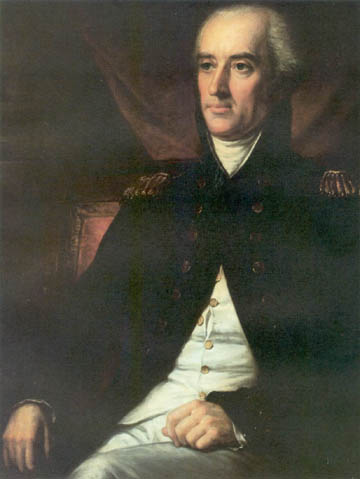
John Armstrong
JOHN ARMSTRONG was born in Carlisle, Pennsylvania, on 25 November 1758; interrupted his education at Princeton University when the Revolutionary War broke out, joined the colonial army, and served on the staffs of Generals Mercer and Gates; participated in the Saratoga campaign and was present when Burgoyne surrendered; wrote the famous "Newburgh Letters" in 1783, outlining Continental Army services and grievances; returned to civilian life in Pennsylvania to become secretary of the state’s Supreme Executive Council; led state militia into the Wyoming Valley region in 1784 to quell settler disturbances; was appointed state adjutant general of Pennsylvania; was elected a delegate to the Confederation Congress in 1787; married Alida Livingston in 1789; moved to Dutchess County, New York, to settle at Red Hook and engage in agriculture; served in the U.S. Senate, 1800–1802; was reappointed to the Senate to fill De Witt Clinton’s unexpired term; was minister to France, 1804–1810; was commissioned a brigadier general and assigned to command New York City and its defenses; served as Secretary of War, 13 January 1813–27 September 1814; was instrumental in securing legislative action for a permanent War Department management staff, and pruned the general officer ranks; shared with President Madison and General William H. Winder the blame for the British capture of Washington and burning of the capital; resigned as secretary in September 1814; returned to agricultural pursuits at Red Hook, New York; wrote Notices of the War of 1812 (1836) and A Treatise on Agriculture (1839); died in Red Hook on 1 April 1843.
The Artist
Daniel Huntington (1816–1906) was born in New York City. He attended Hamilton College in Utica, where Charles Loring Elliott encouraged him to become an artist. He studied under Samuel F. B. Morse and Henry Inman in New York and pursued further studies in Europe, especially in Rome, in the late 1830’s and the 1840’s, finally achieving a reputation as a leading portrait, historical, and landscape painter. Huntington painted portraits of fifteen Army secretaries, most notably that of William Worth Belknap, creator of the gallery of civilian chief executives. His portrait of Secretary Armstrong, presented to the department by William B. Astor of New York, is after one by John Vanderlyn (1775–1852).
[32]
JOHN ARMSTRONG
Madison Administration
By Daniel Huntington after John Vanderlyn
Oil on canvas, 36" x 29", 1873
page created 1 March 2001